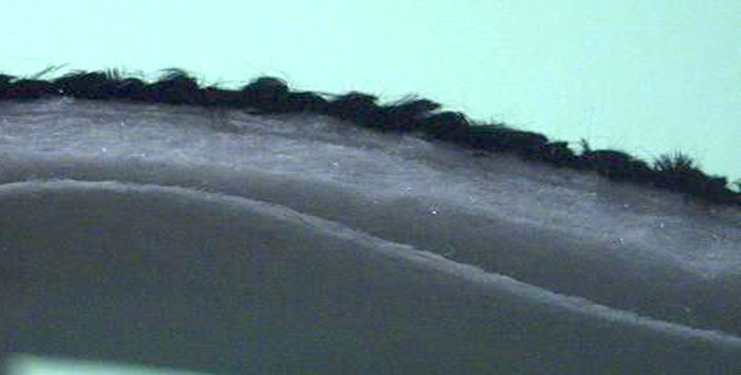
More information about activated carbon

ACTIVE CHARCOAL= ACTIVATED CARBON
Since ancient times, primitive forms of activated charcoal have been used to clean wounds.
„Activated charcoal“ is now widely used as intestinal detoxification in medical practice.
- Various forms of activated charcoal are an essential component of gas mask filters, protecting against the effects of various toxins dispersed in the air.
- In industrial practice as well as in modern medicine, specially designed forms of activated carbon are increasingly used within various filtration processes.
- Sorbents developed on the basis of activated charcoal play a an essential role in decontamination of soils contaminated by chemicals.
A relatively new area of using the activated carbon in treatment are active sorption bandages for covering both flesh wounds and deeper wounds and defects.
They are able to create conditions for the stabilization of the microclimate allowing harmonic healing. With increasing experience with their use there has been progress registered even in such affections, where satisfactory effect could only be achieved by expending extraordinary care, significant material costs and also perfect cooperation of the patient.
Activated carbon in pure microfilamentary form has three major indication areas of application in advanced therapy:
- treatment of acute bleeding wounds where dry carbon layer is dominant;
- treatment of poorly healing wounds and defects where the principle of "wet healing" is implemented as one of the options of modern methods included in this term (e.g venous ulcer treatment);
- first aid in case of wounds with blood poisoning or as part of a comprehensive treatment of stings, bites or other type of injuries caused by poisonous organisms, or body contact with toxins of various origins.
Indicating areas and properties of activated carbon
Medical device based on activated carbon potentiated by the effect of the diffusion pump provides optimum conditions for harmonized healing of wounds that are otherwise difficult to heal.
By significantly speeding up the process of blood coagulation it leads to rapid hemostasis and furthermore reduces penetration, expansion and effect of exogenous toxins in a body.
Its essential indication areas are thus:
- A. Hemostasis
- B. Healing process
- C. Detoxication
Purified activated carbon is environmentally friendly, easy to be used, easy to be stored, affordable and safe.
Materials that use activated carbon for treatment have a long history.
A rapid increase in the level of knowledge over the past two decades has enabled the construction of a new generation of dressing materials using the unique characteristics of specific forms of activated carbon, known collectively as potentiated microfilamentary bioactive carbon.
The microfilamentary form stands out among other commonly used forms for its chemical purity, for a greater absorbency and for its active specific surface area that can be used practically for adsorption.
This form of bioactive carbon is one of two basic ingredients of active bilayer used as the active raw material component for the manufacture of medical products from the TECASORB series, which are designed for a wide use in both human and veterinary medicine.
Activated carbon for external use
The currently available forms of medical devices based on the active bilayer are used to treat wounds and defects of skin cover. Physico-chemically activated carbon is not directly involved in metabolic processes occurring in the the living organism by delivering extraneous substances, or inducing the formation of substances that were not present in the body until then. Its bioactivity lies in the ability to physically and chemically bind a broad spectrum of substances and particles in the wound that are not desirable there. With its extremely large surface area and physico-chemical properties in terms of healing, bioactive carbon can influence the behavior of tissues which it is in direct contact with.
Due to the generally known properties of activated carbon as a detoxifying agent, it is out of question that it could be toxic or irritating to a living tissue.
The TECASORB medical devices used for complex wound care are fundamentally different from conventional products used in similar indications. The main differences are:
The bioactive carbon is applied for a particular time period where there is a gradual saturation of the total sorption capacity of the carbon layer.
The length of this period depends on the phase of wound healing, the level of toxin contamination, the status of infection or colonization by microorganisms, and the amount of exudate produced by the wound/defect.
It is in direct contact with tissues. Considering absolute purity and chemical character of this effective detoxification device and sufficient cohesion of carbon microfibers it is not necessary and also not functionally desirable to separate this form of bioactive carbon from the environment where it should be operating by any barrier such as semipermeable membranes, as it is common in the case of majority of other products based on activated carbon, that have either lower purity of carbon substrate or inconsistency of its form.
The effect upon tissue and the wound/defect environment is the complex of chemical and physical action, in which different functional mechanisms given by the microstructure and the nature of the material apply in varying degrees according to the nature of the wound.
One must clearly distinguish methods of treatment for three basic indicating ares of TECASORB medical devices:
- Treatment of acute bleeding wounds where it is essential to accelerate haemostasis. The medical products from TECASORB series are applied on dry, often only as a short-term compression. By its nature it is more a tool than a bandage, because the time of its application for achieving haemostasis is measured in dozens of seconds up to a few minutes at most.
- Treatment of problematic wounds where mainly sorption function applies while respecting the principles of "wet healing".
- Treatment of injuries with the presence of exogenous toxin. It is necessary not only to apply the compress, but also consider the temperature of the applied cover according to the thermal stability of the toxin.
Activated carbon for internal use
Practical use of materials based on potentiated bioactive carbon in the sterile surgical operation field is in the beginning.
Preparations of clinical studies of a wide spectrum of its use during surgery are ongoing. The ability of local haemoconcentration and acceleration of coagulation cascade will be dominant.
It seems that it it predestined to become a device for rapid haemostasis in the blunt preparation of adhesions or from the the cutting surfaces on parenchymatous organs etc.
Practical application of appropriate forms of medical devices of the TECASORB series is more a matter of routine technical solution and the need for prudent clinical testing, rather than a matter of factual research.
It can therefore be reasonably expected that after proper clinical validation, TECASORB will complement the product range.
Links
- More about activated carbon on the Wikipedia
- Dissertation by Júlia Stracenská, M.D. on topic: Monitoring of antimicrobial activity of dressing materials used for moist healing in the tratment of chronic wounds.
Do you want learn more about the operating principle of activated carbon?
We are happy to explain everything and give specific examples. Please contact us.
Our Partner
Our pruducts
Information
© 2016 INVAZ s. r. o.
website was created by eStudio.cz | Webhosting & SEO: www.eStudio.cz
